Linespot Flasher Wrasse
$54.99
-
Select Variant
The Linespot Flasher Wrasse can be sometimes referred to in the form of the Dot Dash or Spot Lined Flasher Wrasse It is among the quietest of all Flasher Wrasse. This beautiful fish is an energetic show-stopper, and is a great addition to your peaceful reef aquarium. The female's color is more subdued compared with the brilliance of the male. Males during courtship will change color very quickly and hence its name. Colors can change based on the mood of the fish, but the majority of males Linespot Flasher Wrasses are vibrant red with the dorsal fin's base color, with filaments of red, and a subtle blue that runs across the entire length where the dorsal fin joins the body. The fish is unique by having either 4 or 8 filaments of orange or red from the dorsal fin. These filaments may change color to white or yellow in their courtship display.
In their natural habitats, Linespot Flasher wrasse has been observed from shallow crests up to depths as high as 130 feet. It is important to have ample rockwork to build an area to sleep, although often Linespot Flasher wrasse prefers to school within the waters column alongside other Wrasse. Males can be kept if females are introduced before or in the same manner. They are known to jump, therefore an appropriate canopy that is a tight fit is suggested.
Flasher wrasses must be fed at least two to three times per day to maintain their weight. Because they feed on Zooplankton and seldom take on organisms living on live rock, they won't flourish in the reef tank when fed frequently. A quality protein skimmer and Live Sand will help decrease the number of dissolved organics that could result from the more frequent feeding schedule.
Approximate Size of Purchase: Small: 1" to 1-1/2"; Medium: 1-1/2" to 2"; Male: 2" to 2-3/4"
- Description
- Additional Information
- Reviews
General information on the Linespot Flasher Wrasse
The Linespot Flasher Wrasse is among the most tranquil members of all Flasher Wrasse. This stunning fish is a spectacular show-stopper and is a great addition to your peaceful reef aquarium. The female's coloring is subdued if you compare it to the brightness of males. Males during courtship will change color very quickly which is why it has its name. Colors can change based on the mood of the fish however the majority of males Linespot Flasher Wrasses are vibrant red, with the dorsal fin's yellow base color, with red filaments and subtle blue flowing across the length of the dorsal fin connects to the body. The fish is unique in that they have 4 or 8 filaments that are red/orange on the outside on the back of their dorsal fins that can change in color to yellow or white during the courtship display. In their natural habitats, Linespot Wrasse has been observed from shallow crests up to depths up to 130 feet. in protected reefs. Make sure you have ample rockwork you can hide and create an area to sleep, although often Linespot Flasher Wrasse likes to school within the waters column along with other Wrasse. One male could be kept in an assortment of females which are introduced before or in the same manner to the male. These wrasses love to jump, which is why the use of a sturdy canopy is advised.
size
Large, Medium, Small
Units
1
Weight
6 lbs
Dimensions
1 × 1 × 1 in

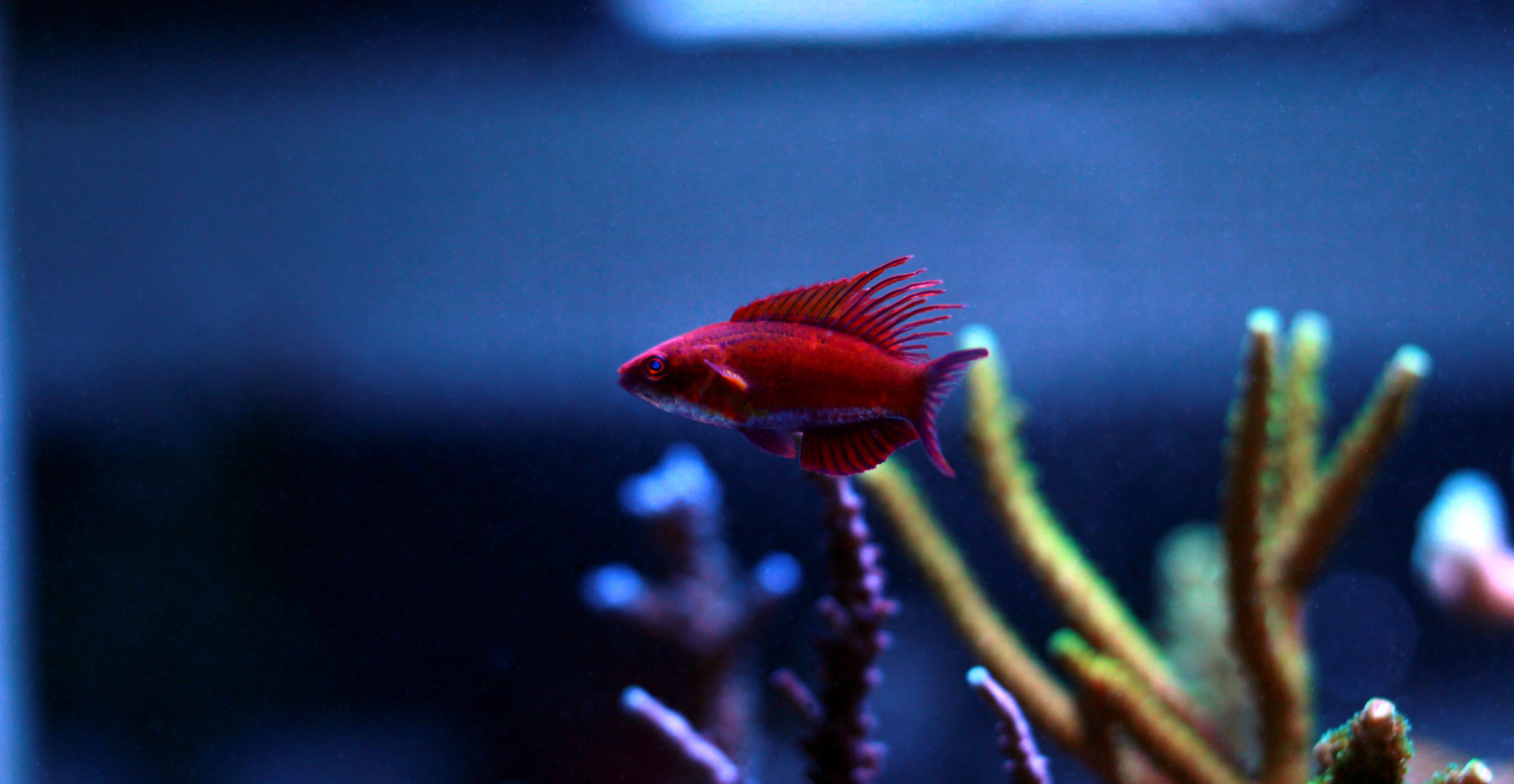
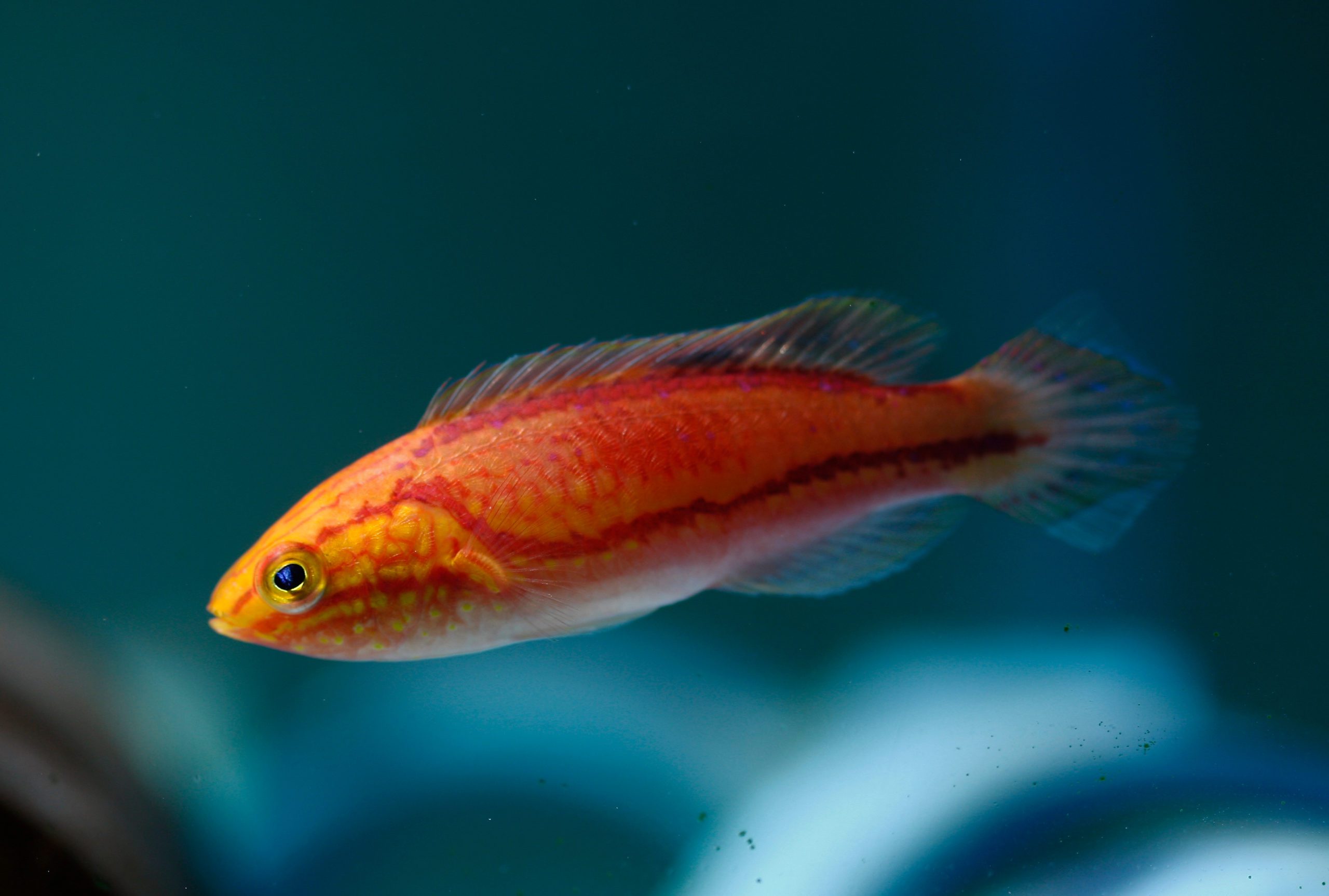
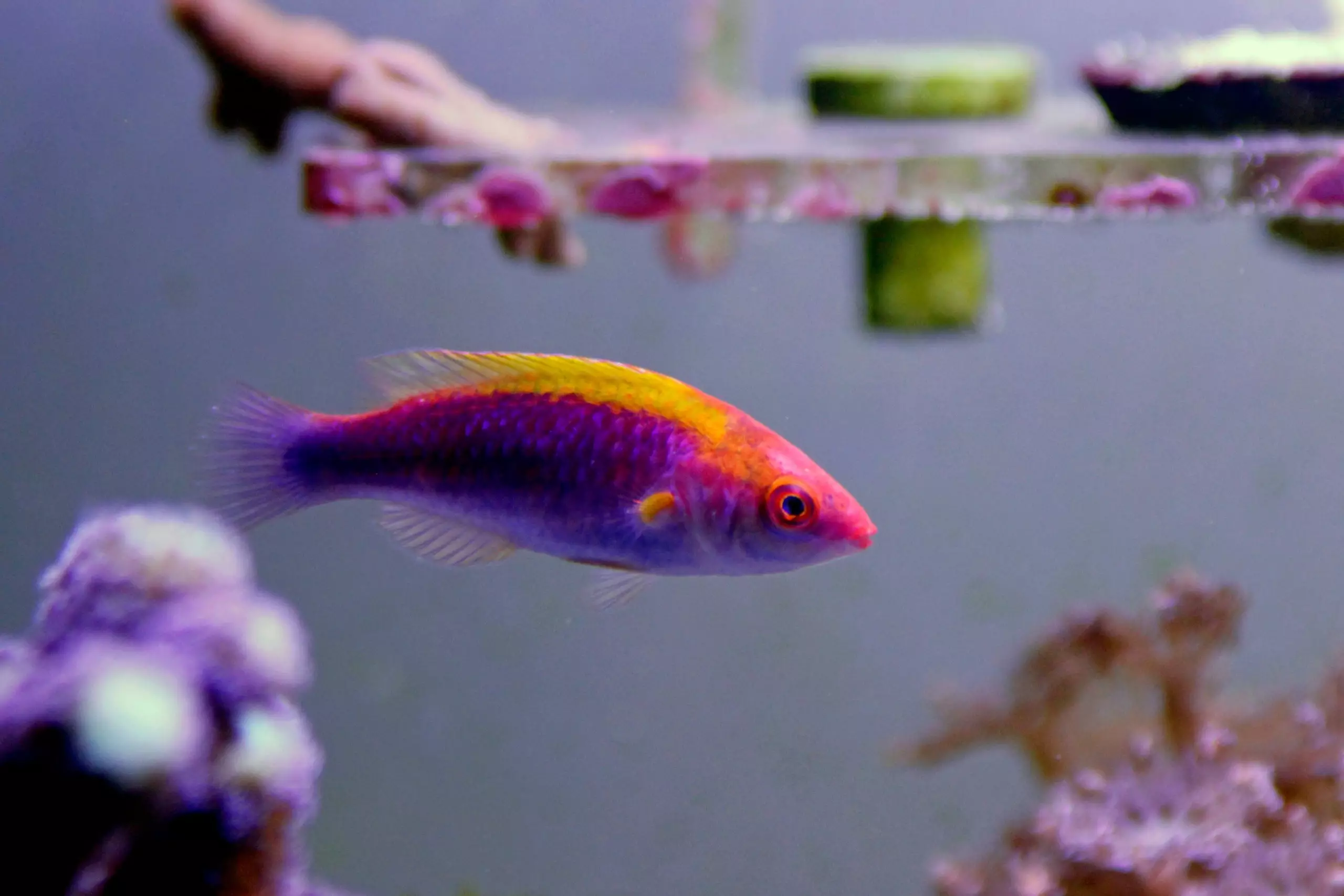
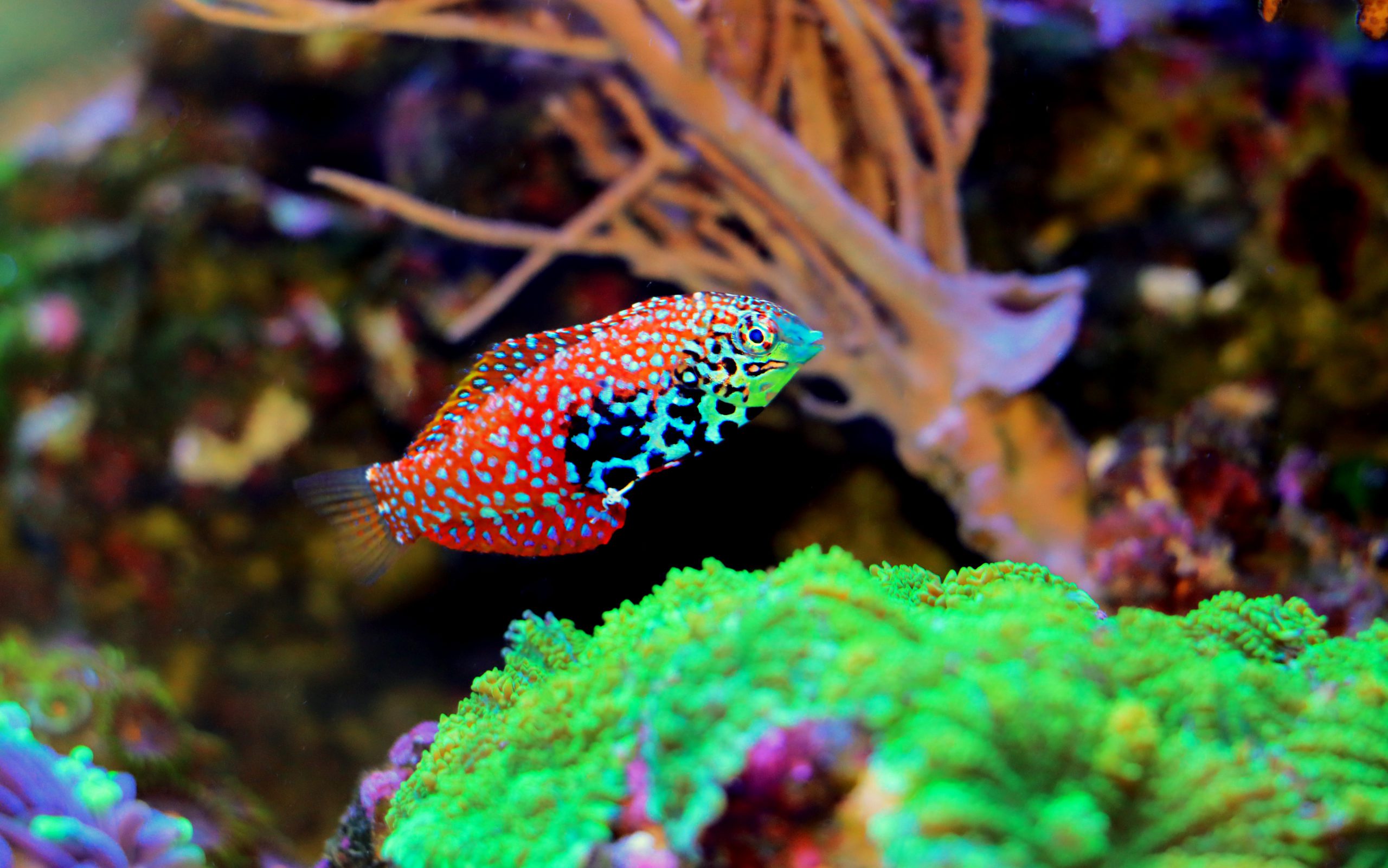
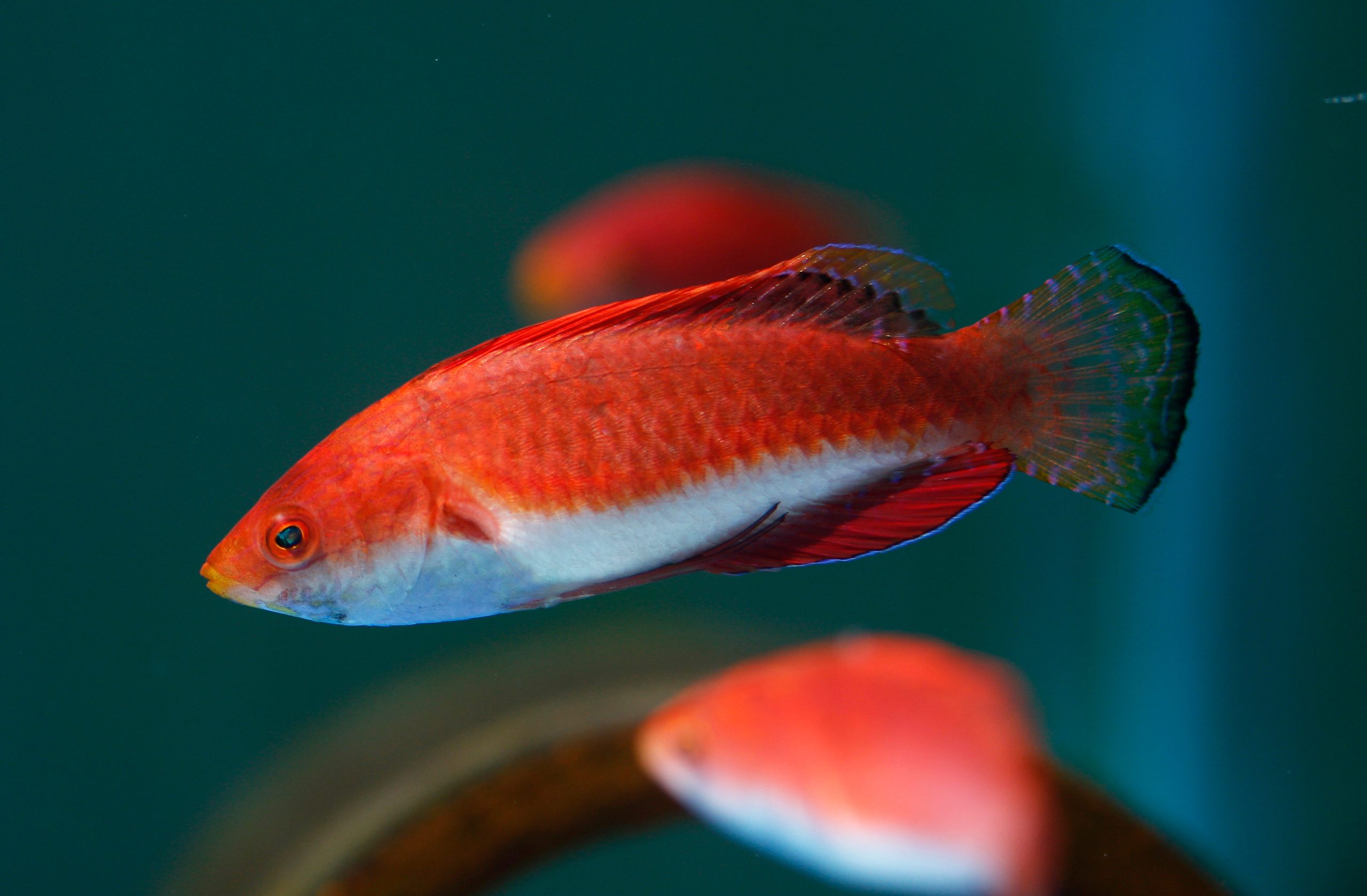
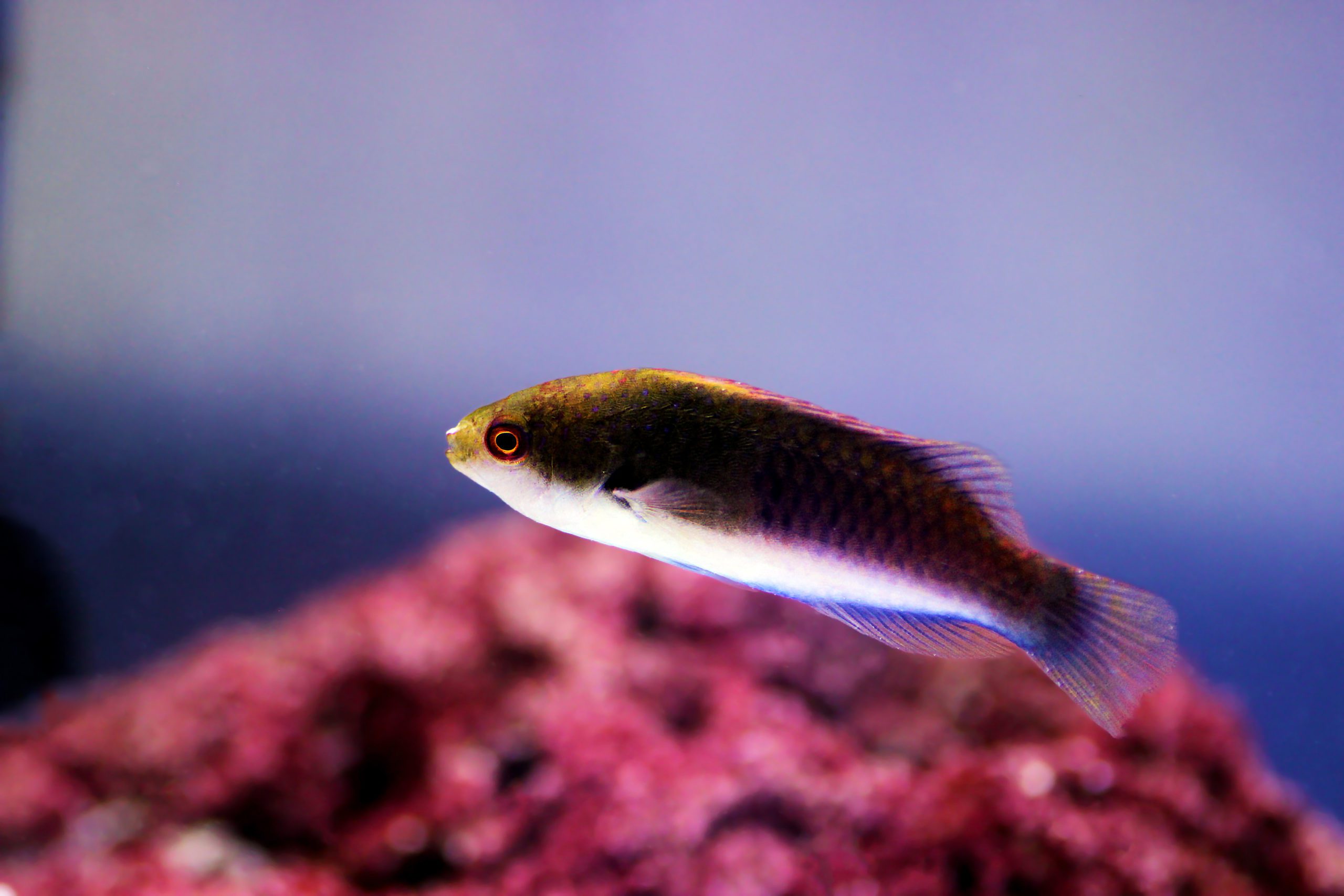
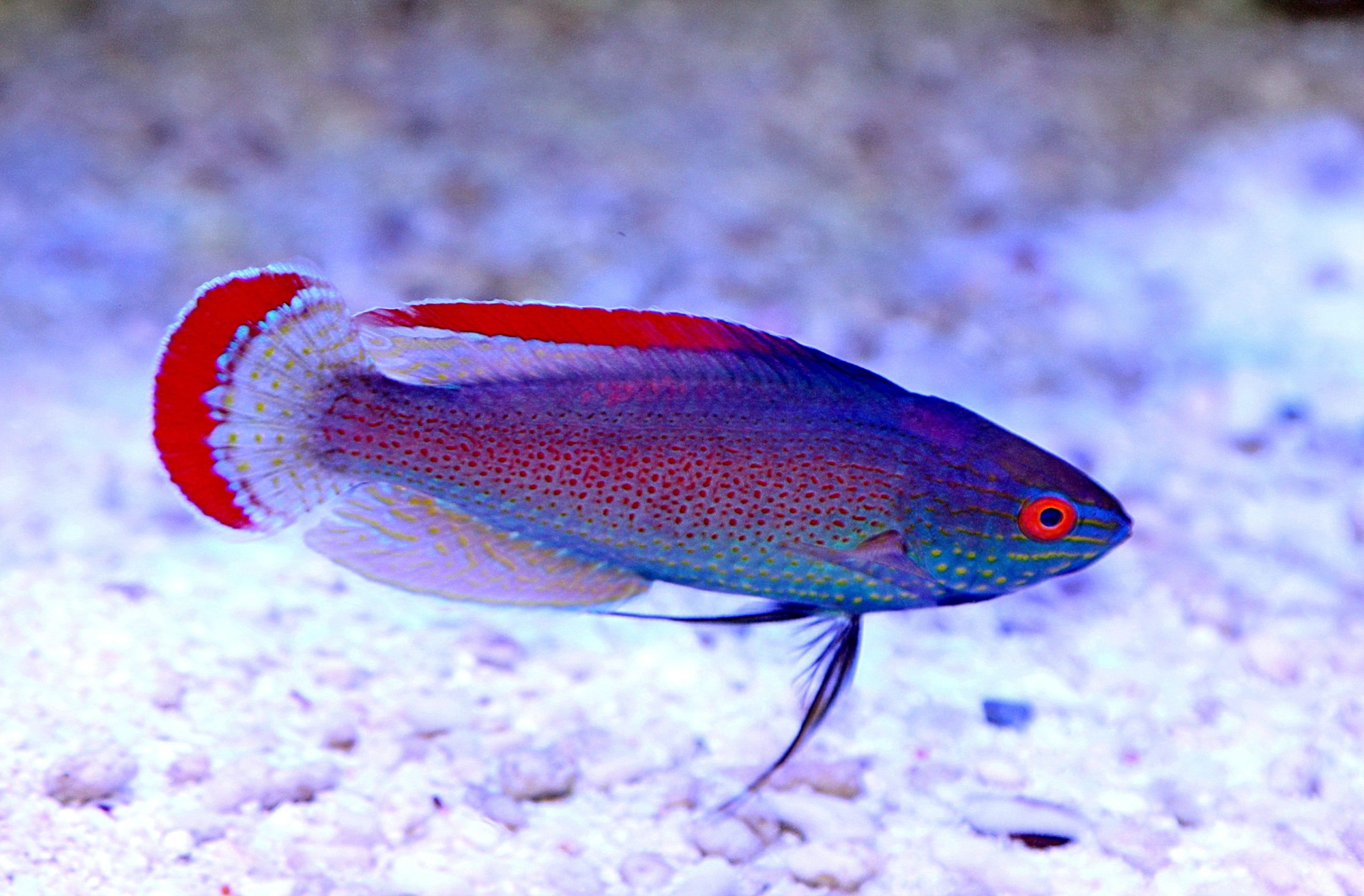
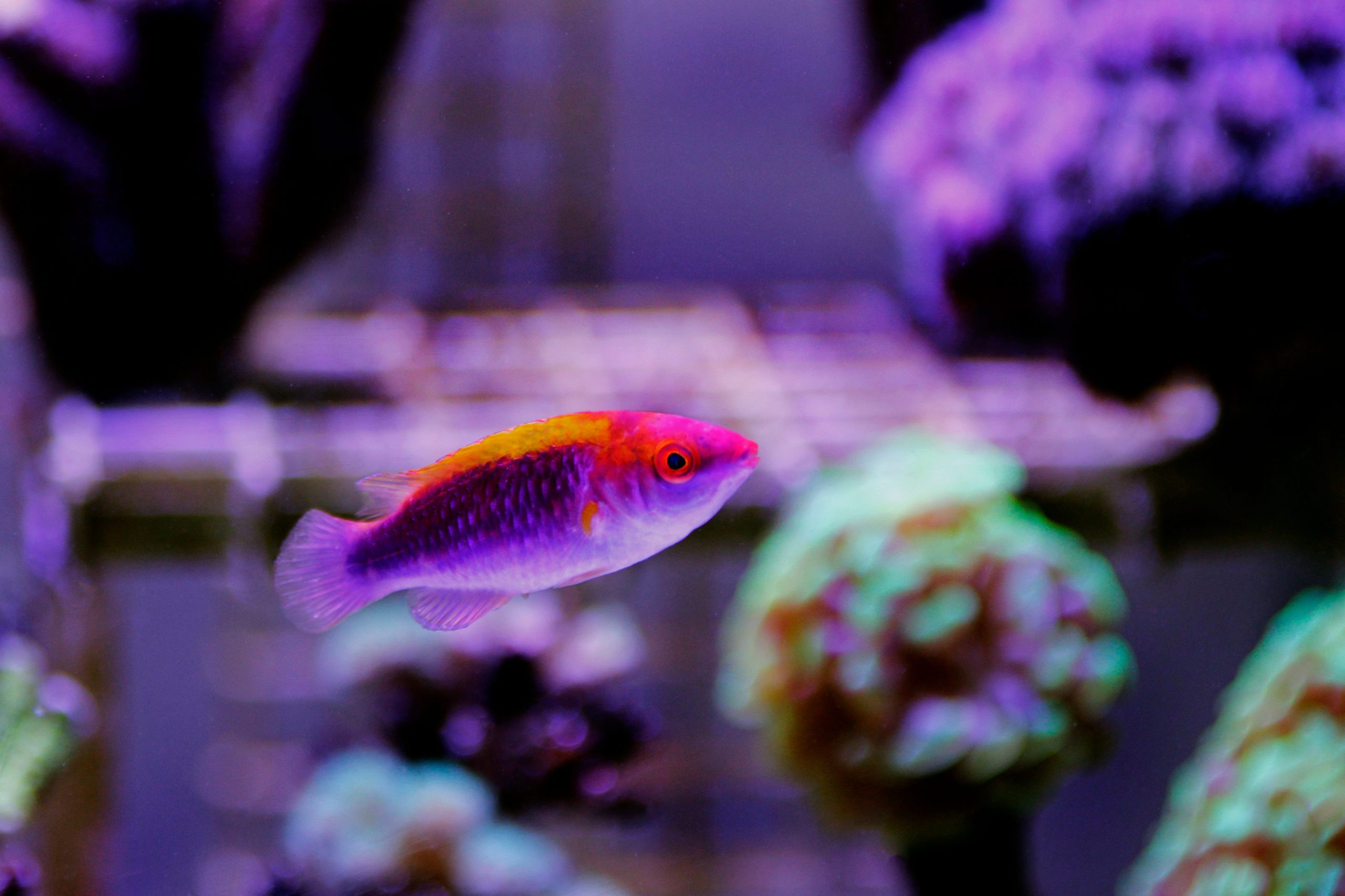
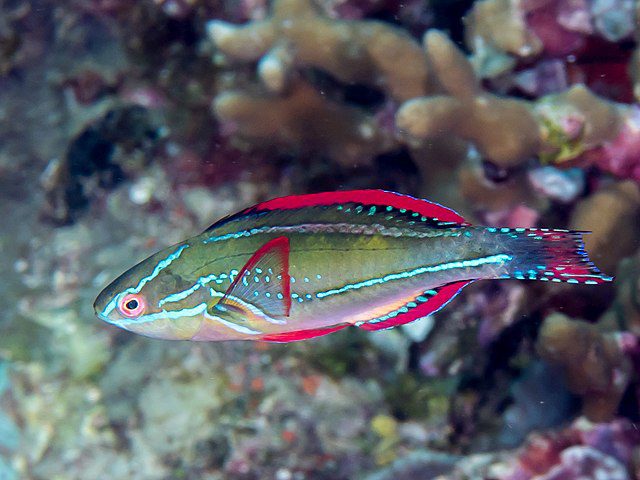

Reviews
There are no reviews yet.